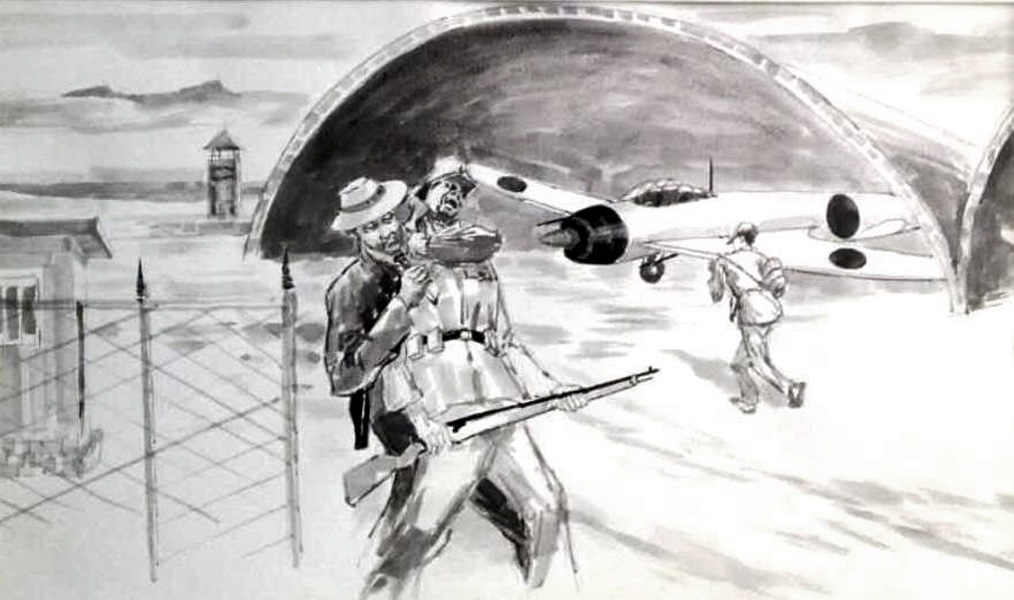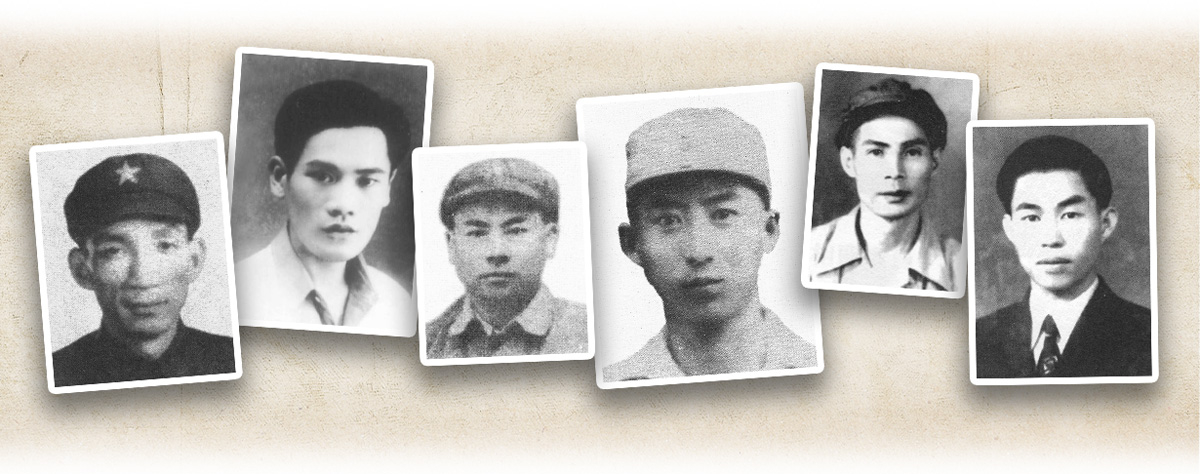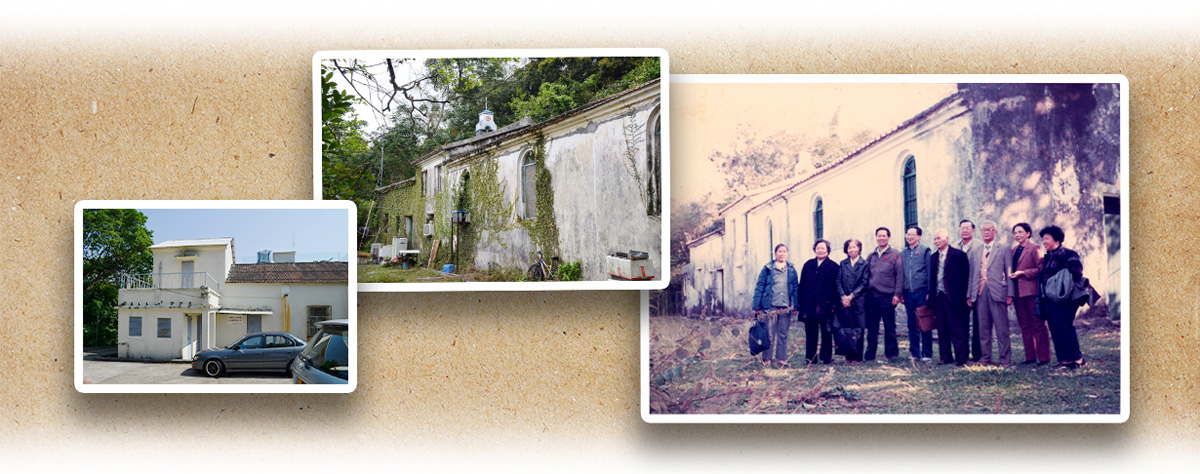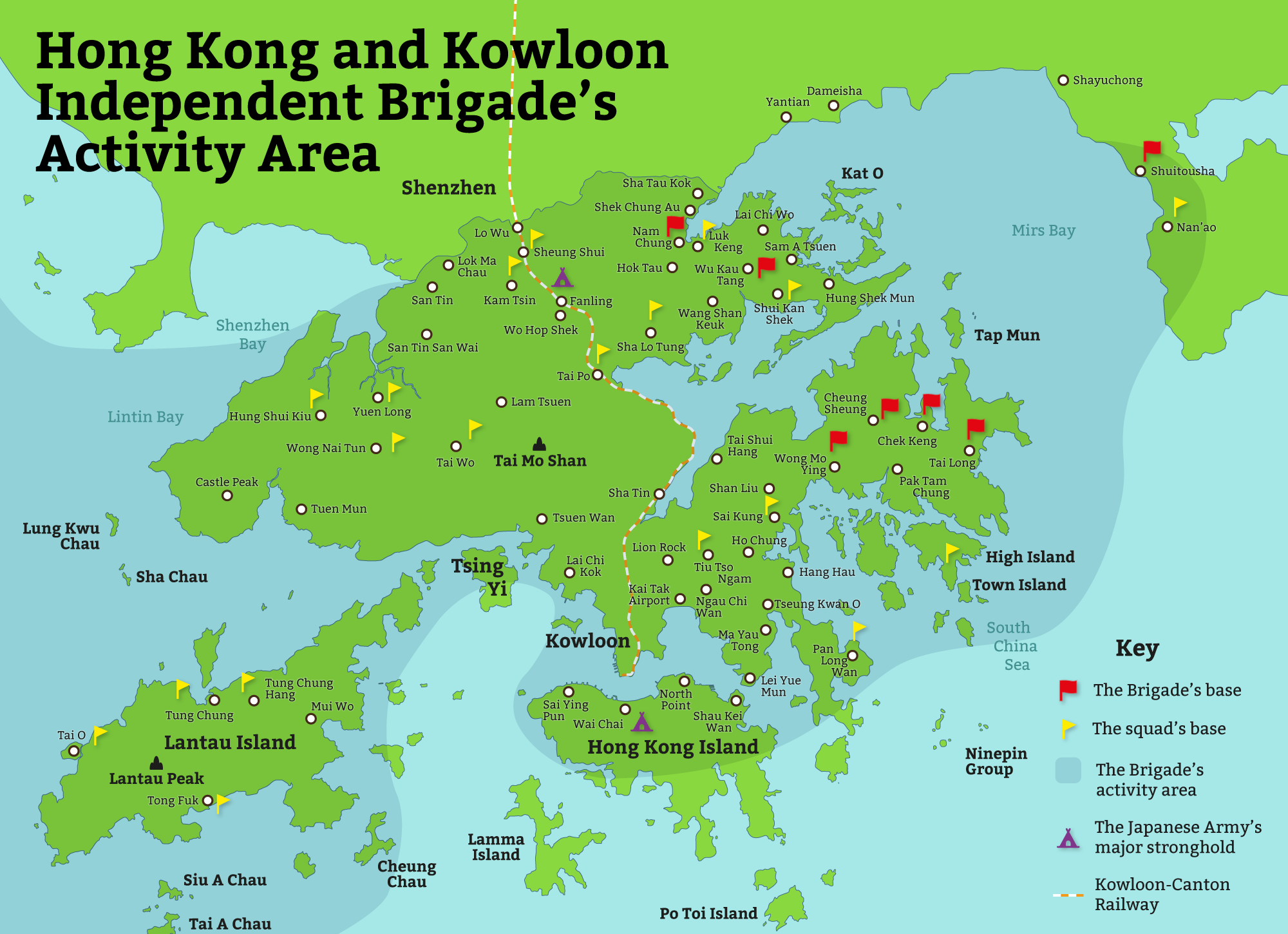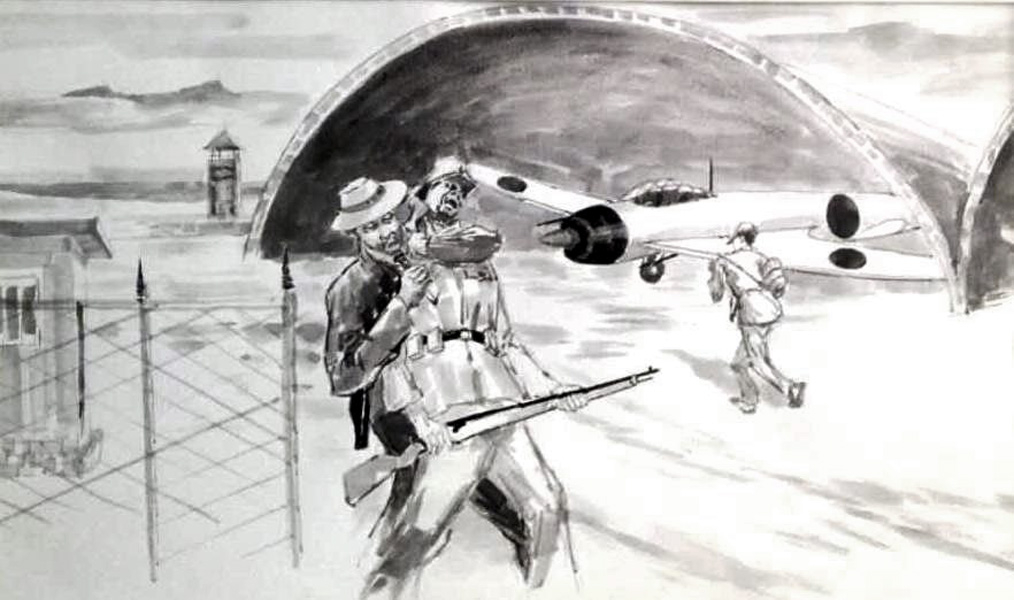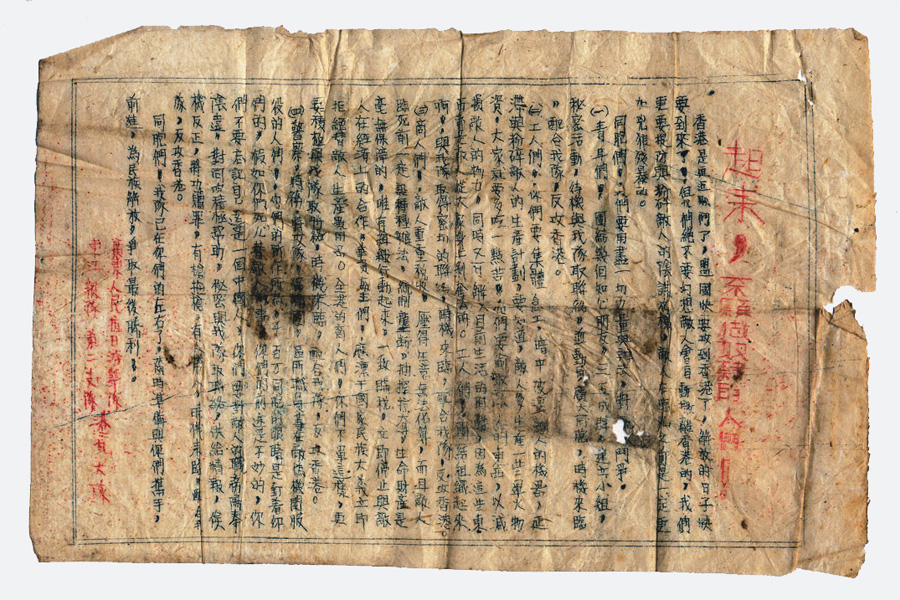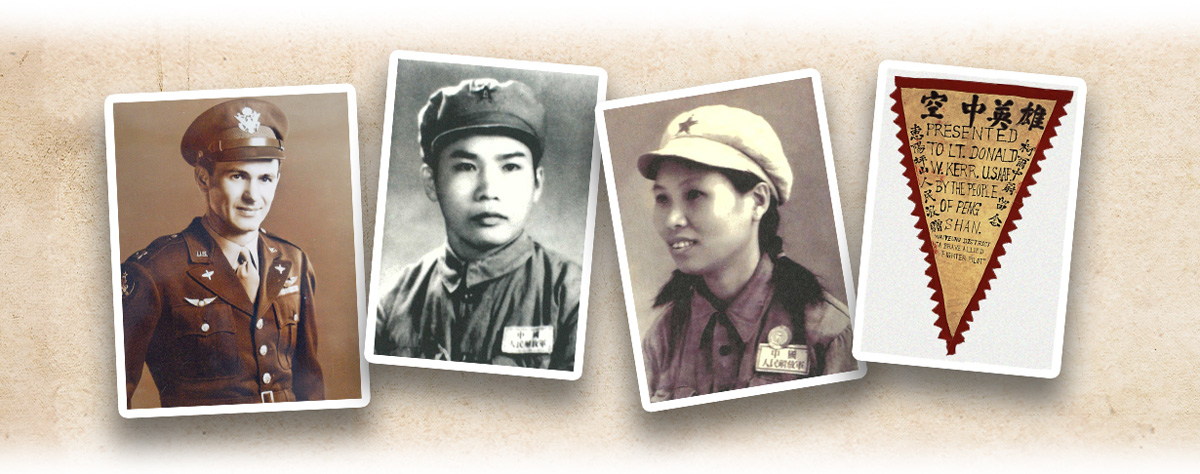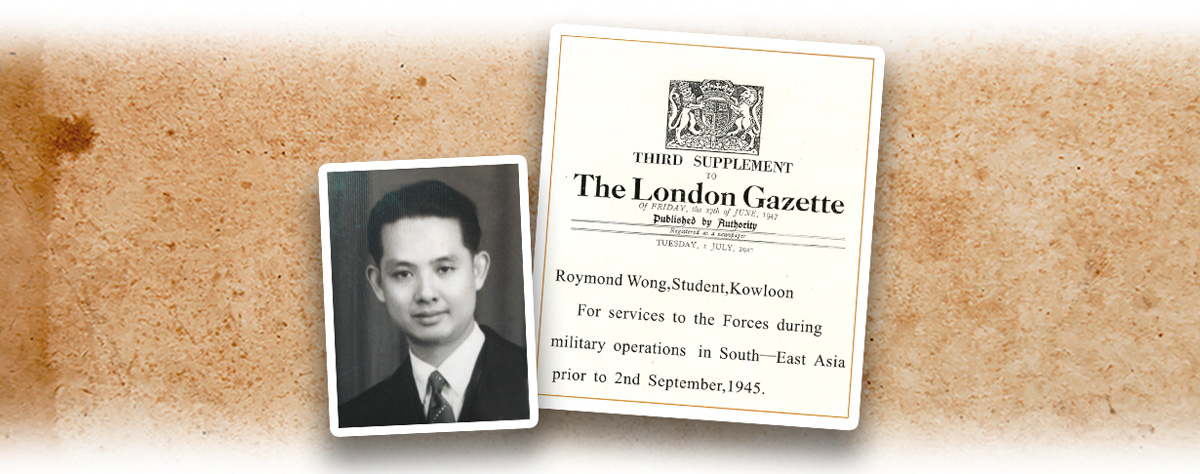After the Battle of Hong Kong broke out in December 1941, the Third and Fifth Corps of the Guangdong People’s Anti-Japanese Guerrilla led by the Chinese Communist Party (CCP, 中國共產黨) sent several armed squads to the New Territories to eliminate bandits and carry out anti-Japanese propaganda to call on villagers to defend their hometown. In late January 1942, the Guangdong People’s Anti-Japanese Guerrilla was reorganised into the Guangdong People’s Anti-Japanese Guerrilla Force. The armed squads sent to Hong Kong for guerrilla warfare were unified. On 3 February, the Hong Kong and Kowloon Brigade was established in Wong Mo Ying, Sai Kung, New Territories.
The squadrons of the Hong Kong and Kowloon Brigade continued to attack and contain the Japanese forces. Liu Heizai (劉黑仔) became a well-known legendary hero. The marine squadron was involved in more than 10 major naval fights. In addition, the Brigade spared no effort to gather Japanese intelligence. During the Japanese occupation, the Brigade and the former armed squads helped some British prisoners of war who escaped from the concentration camp get out of danger. The East River Column rescued eight American pilots between 1944 and 1945. Among them, Lt. Donald W. Kerr and Lt. J. Egan of the Chinese-American Composite Wing were rescued by the Brigade. Its anti-Japanese activities were highly regarded by the American and British allies. After the war, Raymond Wong Chok-mui (黃作梅), the former Head of the International Liaison Unit of the Hong Kong and Kowloon Brigade of the East River Column, was honoured by the British king.
|
|
What were the major contributions of the Hong Kong and Kowloon Brigade during the Japanese occupation period? Explain with examples. |
|
|
See answer below. |
The leaders of the Hong Kong and Kowloon Brigade, from left: Commanders Cai Guoliang (蔡國樑, first term), Lu Feng (魯風, second term) and Huang Guanfang (黃冠芳, third term); the Political Commissars Chen Daming (陳達明, first term) and Huang Yunpeng (黃雲鵬, second term), and the Deputy Commander Luo Rucheng (羅汝澄).
Left: Rosary Mission Centre in Wong Mo Ying, Sai Kung. On 3 February 1942, the Hong Kong and Kowloon Brigade announced its establishment on a hill in Wong Mo Ying Village; Middle: the major unit of the Hong Kong and Kowloon Brigade used to station in the Holy Family Chapel in Chek Keng, Sai Kung; Right: the veterans of the Hong Kong and Kowloon Brigade revisited the Holy Family Chapel in Chek Keng in December 1987.
A map showing the regions where the Hong Kong and Kowloon Brigade was active.
A picture depicting how the handgun team raiding the Kai Tak Airport.
The Shatin Handgun Team led by Huang Guanfang and Liu Heizai attacked the Japanese forces many times in places such as the Lion Rock area, Cha Kwo Ling, Ngau Chi Wan, Tai Tan Hoi (or Long Harbour), and Wo Tong. They killed the Japanese spy Tojo Masashiba and several Chinese secret agents working for the Japanese. In early 1944, the handgun team successfully raided Kai Tak Airport and blew up an aircraft in early 1944. The Japanese forces sweeping Sai Kung and Sha Tin were forced to retreat to the urban area.
The wooden ship used by the marine squadron (photo by Lo Au-fung﹝羅歐鋒﹞). The marine squadron was involved in more than 10 naval fights of a larger scale. According to the available statistics, it captured 13 enemy ships and sank four, and 28 Japanese soldiers were taken captive. Members of the squadron seized three machine guns, 42 shotguns and handguns, one cannon, and many military supplies.
A leaflet distributed by the Hong Kong and Kowloon Brigade.
The Hong Kong and Kowloon Brigade rescued the personnel of the Allies. From left: the American pilot Lt. Donald W. Kerr, Li Shi (李石, photographed in 1954) and Li Zhaohua (李兆華, photographed in 1950), both were guerrilla members who participated in the mission of saving Kerr, and a flag presented to Kerr by the people of Ping Shan (坪山, or Peng Shan).
On 11 February 1944, Lt. Donald W. Kerr’s plane was shot down by the Japanese forces during an air raid on Kai Tak Airport. Fortunately, he landed safely using a parachute. Kerr then hid from the Japanese. Later the members of the Hong Kong and Kowloon Brigade found him and helped him escape.
Zeng Sheng (曾生), the Commanding Officer of the East River Column, giving Lt. Donald W. Kerr a send-off at the command centre of the East River Column in Tuyang Village (土洋村), Shenzhen (深圳).
The book I Bring You Go Home Now: A Memoir by Lt. Donald W. Kerr is a wartime diary of Kerr. It contains a record of 27 days, starting from 11 February 1944 when his plane was shot down, to 9 March 1944 when he was escorted to the command centre of the East River Column in Tuyang Village.
In 1944, the Hong Kong and Kowloon Brigade set up an observation point at U Lam Terrace in Mid-Levels, Hong Kong, to monitor the Japanese warships and military installations in Victoria Harbour round the clock. The photo shows the present view of U Lam Terrace. The person at the lower right corner is Wen Shuyun (文淑筠), one of the intelligence agents at that time.
One of the important contributions of the Hong Kong and Kowloon Brigade of the East River Column was its outstanding intelligence work, which was highly regarded by the Allies. The “Flying Tiger General” Claire Lee Chennault and the US Military Intelligence Corps wrote to Zeng Sheng, the Commanding Officer of the East River Column, a number of times to praise the Column’s intelligence work.
In 1947, Raymond Wong Chok-mui, the former Head of the International Liaison Unit of the Hong Kong and Kowloon Brigade of the East River Column, was honoured by King George VI. The photos show Wong and the related report in The London Gazette.
In recognition of Raymond Wong’s “services to the Forces during military operations in South-East Asia prior to 2 September 1945”, King George VI awarded Raymond Wong the M. B. E. (Member of the British Empire) honour in early 1947. Wong was the only CCP member who received this honour from the British king at that time.
|
|
What were the major contributions of the Hong Kong and Kowloon Brigade during the Japanese occupation period? Explain with examples. |
|
|
Its major contributions during the Japanese occupation were as follows: 1. It fought with the Japanese forces on land and at sea. For example, the Shatin Handgun Team attacked the Japanese many times in different places. The marine squadron was involved in more than 10 naval fights of a larger scale. Their attacks struck the enemy. 2. It rescued the personnel of the Allies, including British prisoners of war who escaped from the concentration camps, and American pilots pursued by the Japanese. 3. It gathered Japanese military intelligence. For example, it set up an observation point at U Lam Terrace in Mid-Levels, Hong Kong, to monitor the Japanese warships and military installations in Victoria Harbour round the clock. |




